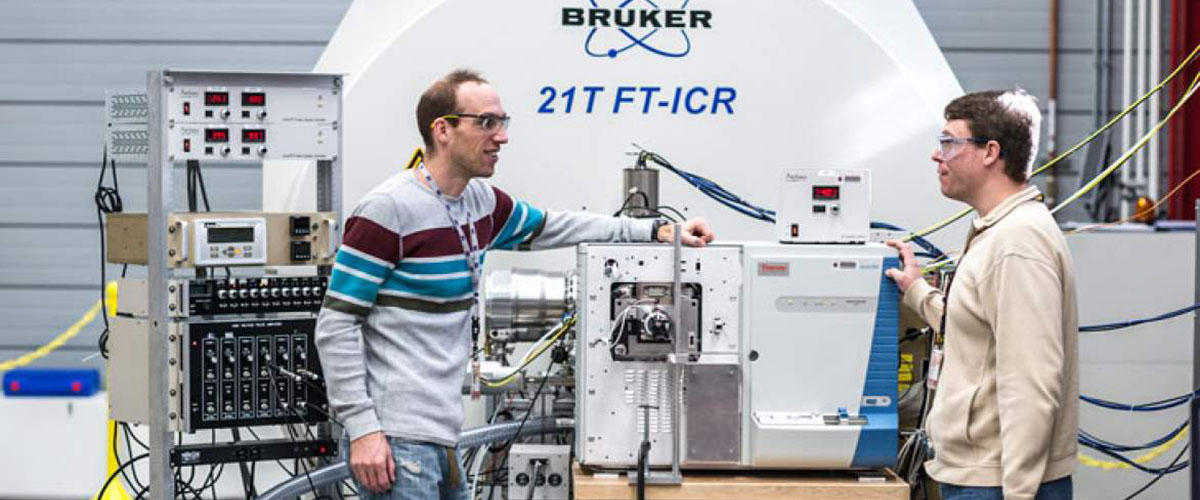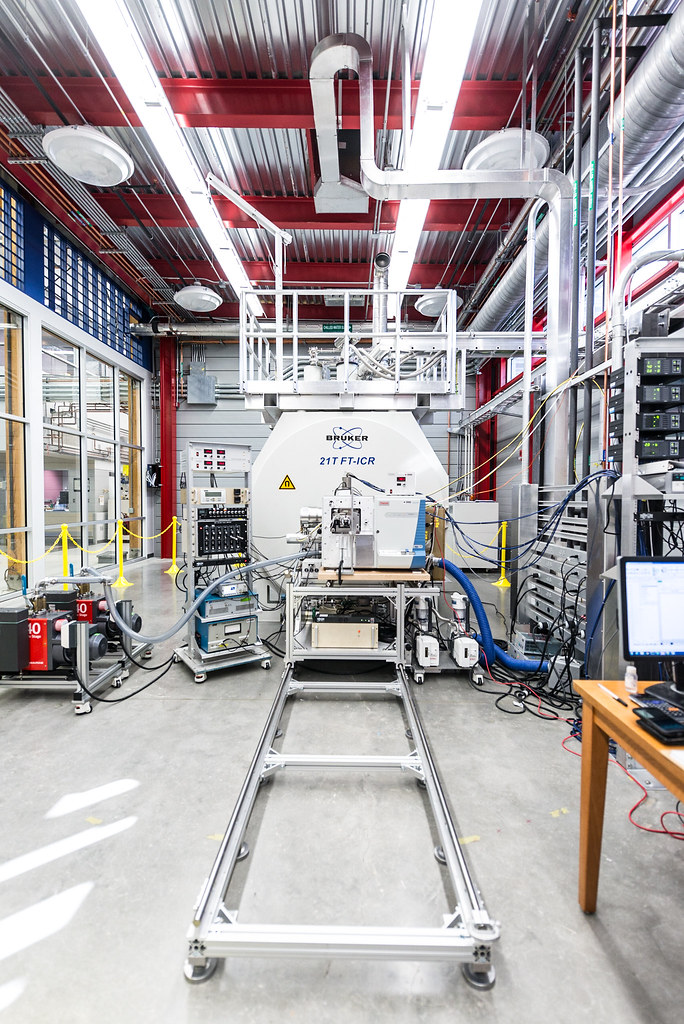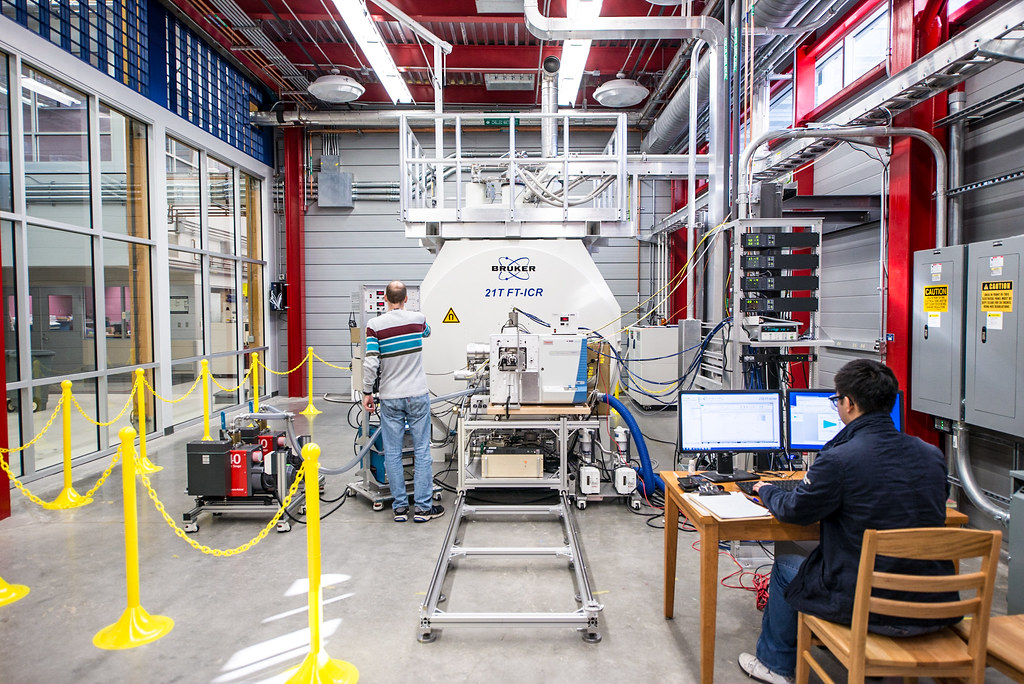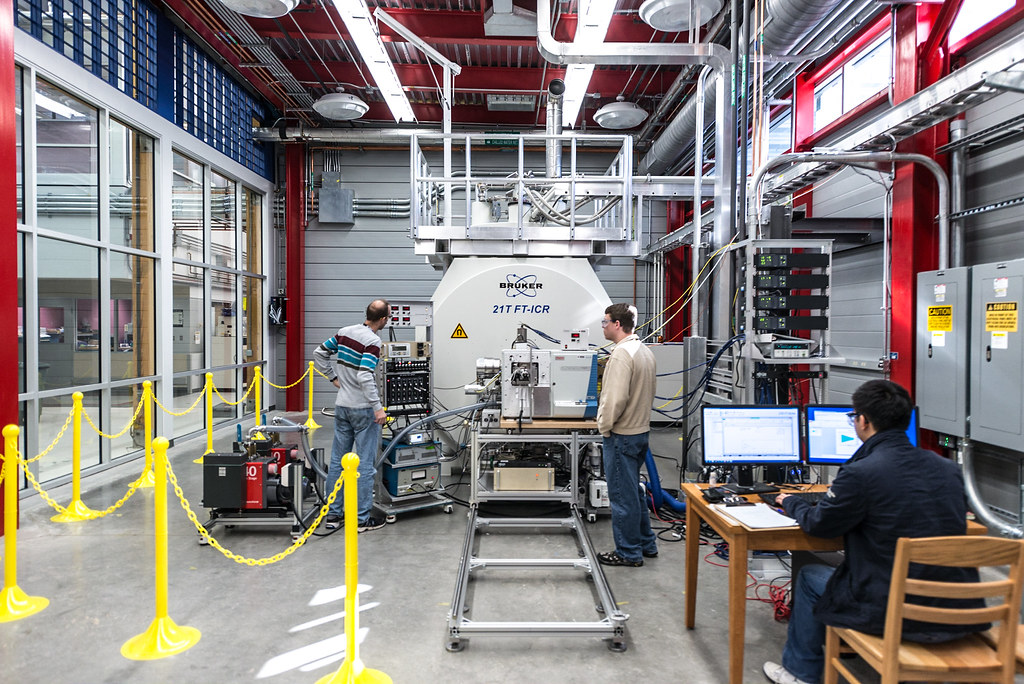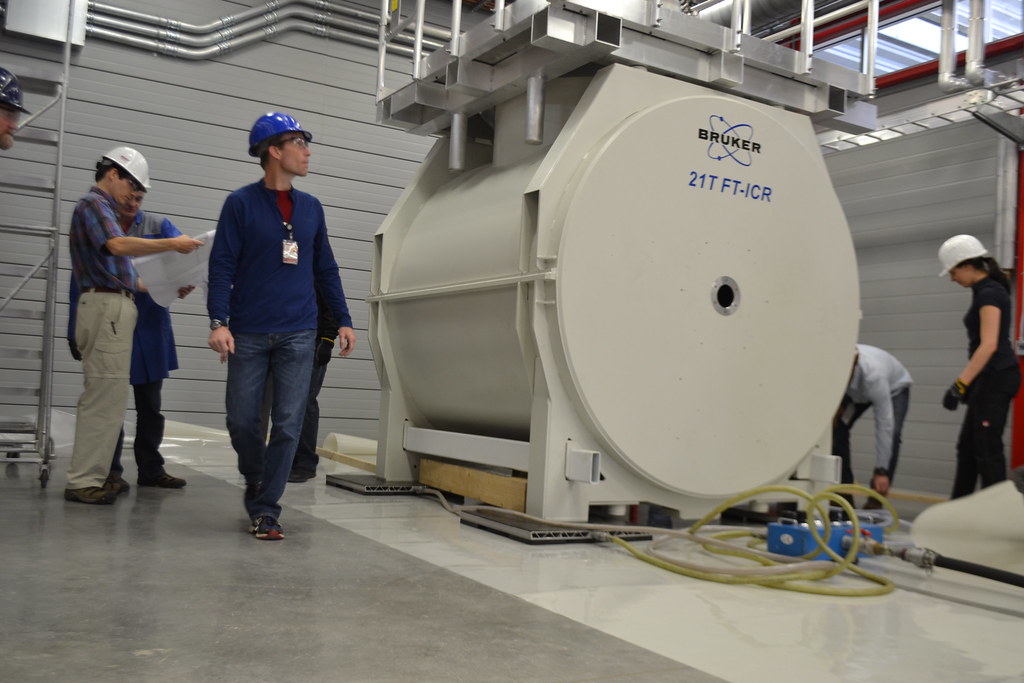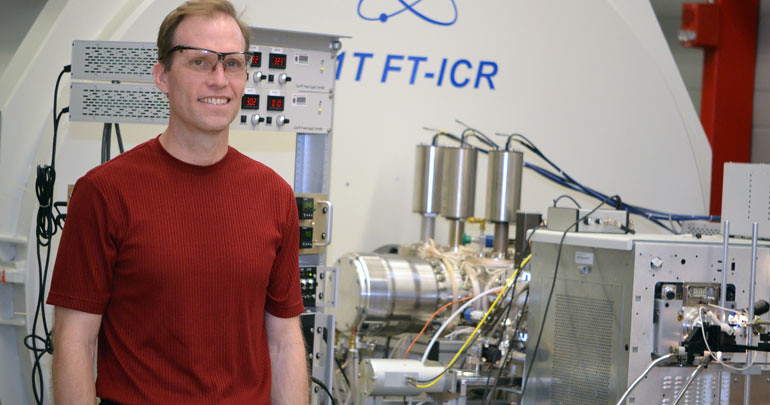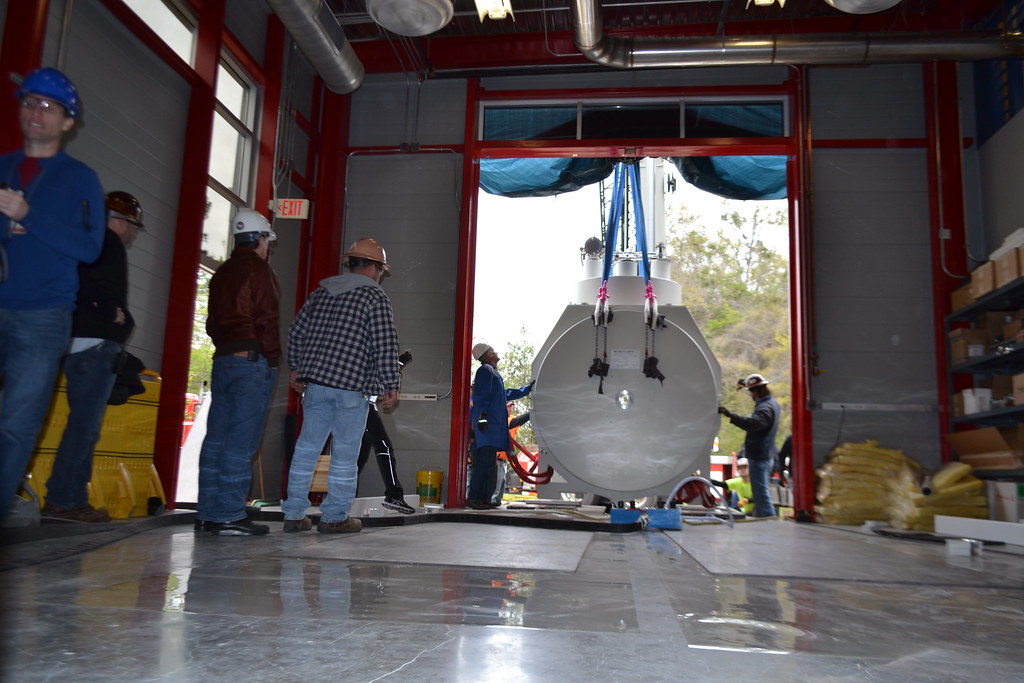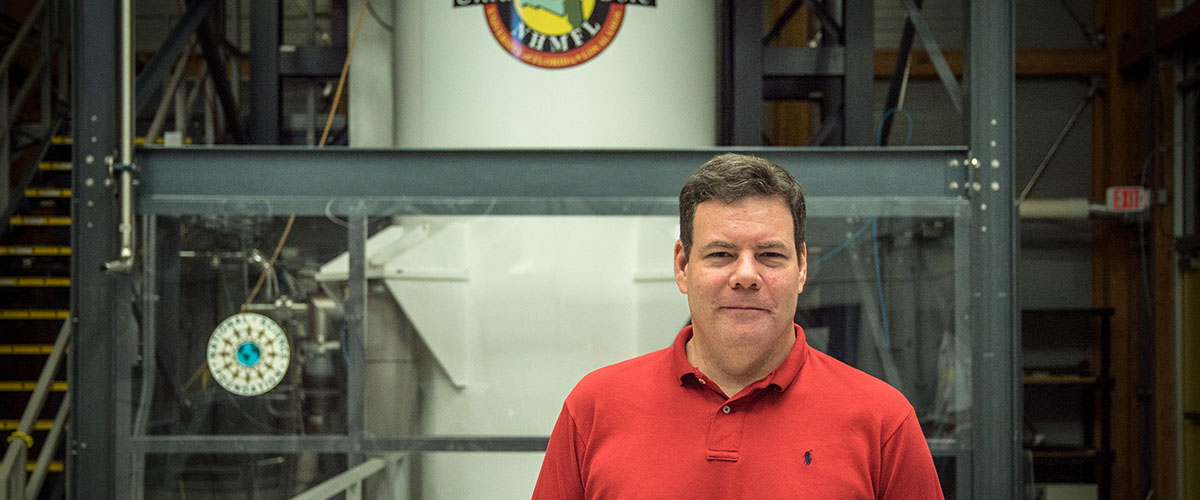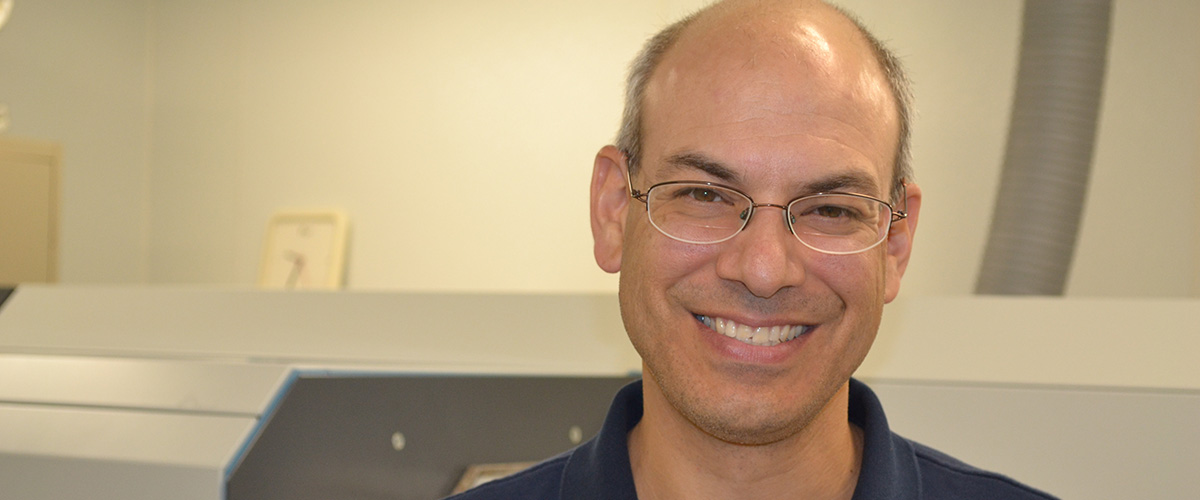Contact: Kristin Roberts or Chris Hendrickson
TALLAHASSEE, Fla. — A new world record magnet used to perform complex chemical analysis is now available for users at the National High Magnetic Field Laboratory (National MagLab). The 21 tesla (T) ion cyclotron resonance (ICR) magnet offers researchers the world's highest field for ICR mass spectrometry.
"Developing new magnets that push science forward is part of our charge as a lab," said MagLab Director Greg Boebinger, who has been at the helm during the launch of dozens of new magnets. "There is always a remarkable energy around opening new magnets to our user community. We expect the 21 T to continue to generate excitement with critical research and exciting discoveries over its long life at the National MagLab."
The new system is the embodiment of private-public partnership, featuring a Bruker-built magnet combined with unique instrumentation designed and built at the National MagLab. Together, they will offer researchers a tool for understanding the structure of proteins, analyzing the chemical composition of biofuels, identifying biological markers for diseases and exploring the world's most complex mixture, petroleum.
The MagLab's ICR Facility has already been at the forefront of petroleomics, able to identify up to 100,000 different molecules in oil samples using the Fourier Transform (FT) ICR technique that combines high resolution and sensitivity to tell discrete molecules apart by mass. This upgrade to 21 T represents a 45 percent increase in field compared to the lab's earlier flagship ICR magnet, and more than doubles the accuracy of measurements to ~50 parts per billion. Initial research on the design and performance of the 21 T system is published in the September issue of the Journal of the American Society of Mass Spectrometry.
"With 21 teslas, scientists will be able to see complex organic mixtures like proteomes, metabolomes and petroleum much more clearly than ever before," said Chris Hendrickson, ICR facility director. "And researchers will also be using this instrument for mapping contact surfaces in biomolecular assemblies."
The National MagLab is home to over a dozen world record magnets, but it is the magnets coupled with in-house expertise that keeps scientists from around the world coming to perform their experiments. Last year alone, over 170 researchers used the lab's ICR Facility to produce 23 publications.
"Our magnets are only one part of the puzzle," said Alan Marshall, chief scientist for ICR and co-inventor of the FT-ICR technique. "The scientists who support users running their experiments are critical partners in the research experience at the National MagLab."
The 21 T was funded by a $17.5 million grant from the National Science Foundation's Division of Chemistry. There is no cost to use the magnets. Users can submit proposals through the online system. Those proposals will be reviewed for scientific merit and broader impact before magnet time is awarded.
For more information, read technical details about this new magnet system or contact ICR Facility Director Chris Hendrickson.



